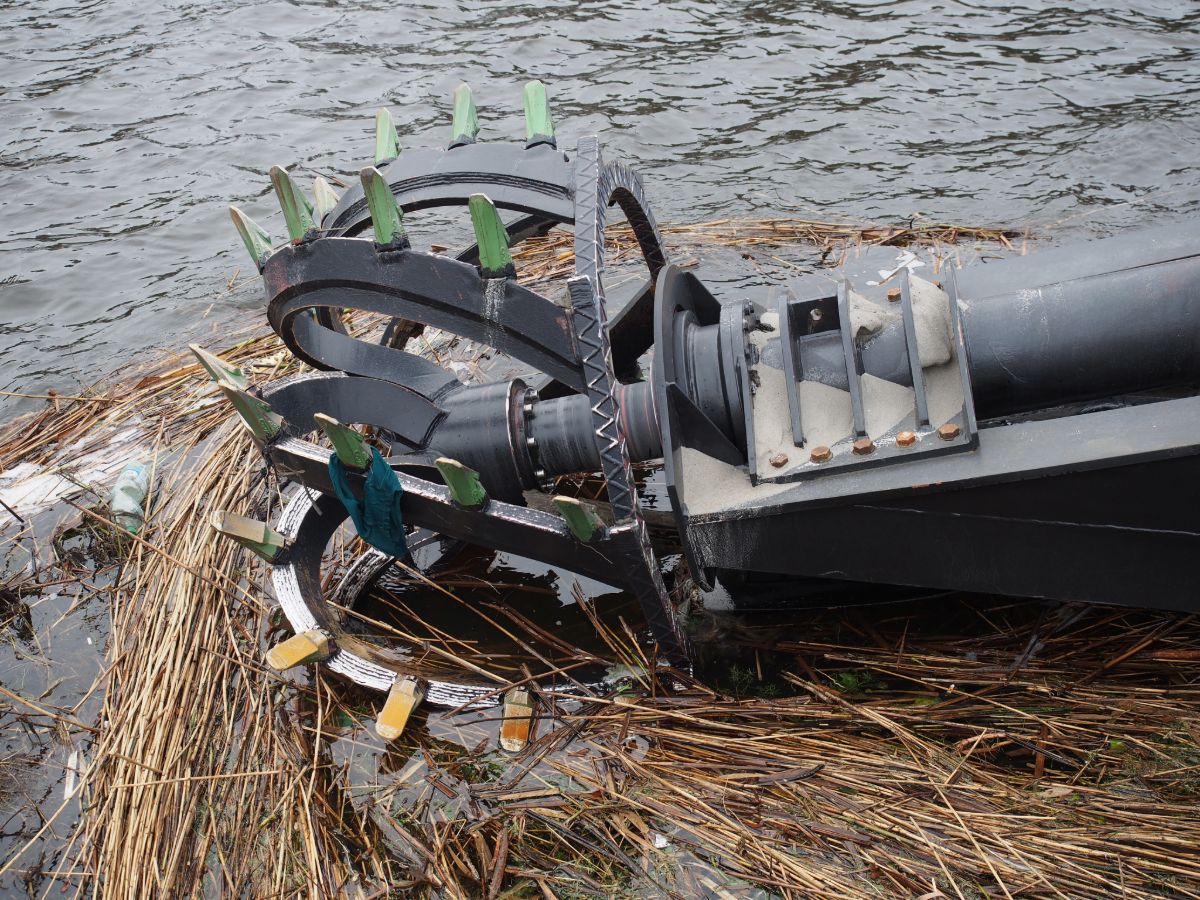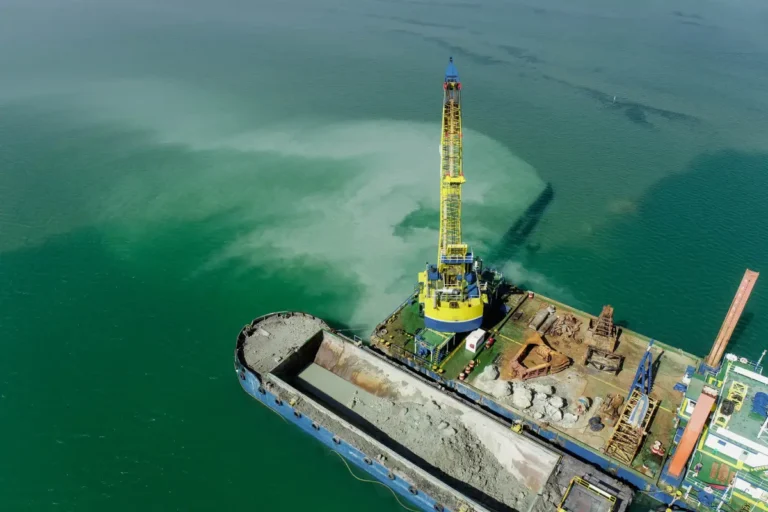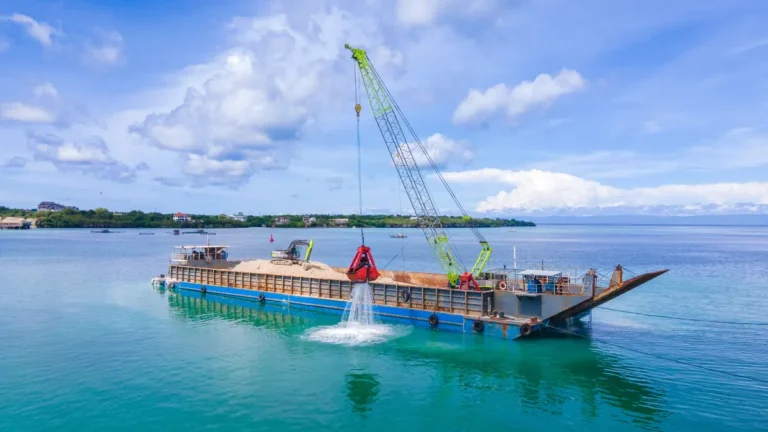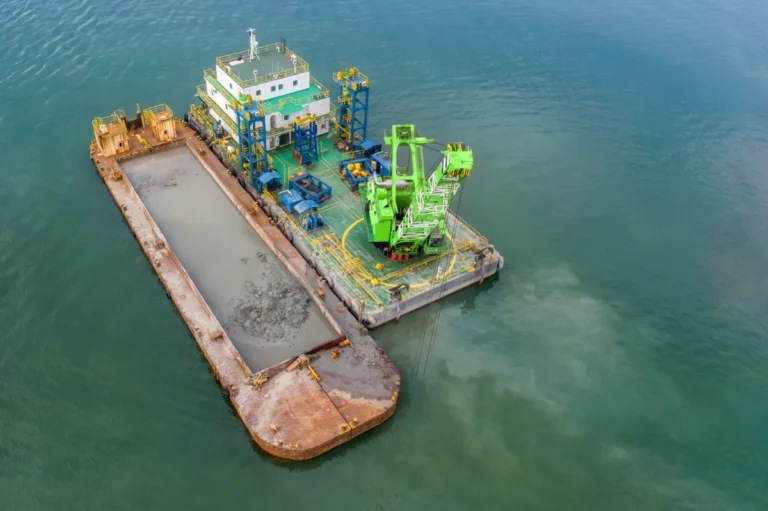Dredging services are crucial for maintaining navigable waterways, restoring ponds, and supporting flood control and infrastructure projects. Yet, every dredging operation also interacts with sensitive ecosystems, raising questions about environmental impact and responsibility. From pond dredging services in municipal areas to large-scale dredge services for ports and rivers, the industry faces increasing pressure to balance human needs with ecological protection. Understanding these impacts—and the strategies used to mitigate them—is key to shaping the future of sustainable dredging.
The Environmental Footprint of Dredging Services
Modern dredging services play a vital role in maintaining waterways, enhancing navigation, and restoring ponds and lakes; however, they also leave a distinct environmental footprint. Understanding these impacts is critical for both regulators and communities seeking sustainable solutions.
Physical Impacts
One of the most immediate effects of dredge services is the resuspension of sediment. As dredging equipment disturbs the bed, fine particles are released into the water column, increasing turbidity. Elevated turbidity can reduce sunlight penetration, disrupt photosynthesis in aquatic plants, and alter shoreline stability. In pond dredging services, this issue is even more pronounced because smaller water bodies react faster to changes in water clarity.
Biological Impacts
Dredging activities can temporarily disturb aquatic habitats, including fish spawning grounds, benthic organisms, and shoreline vegetation. While large-scale dredging services may affect extensive ecosystems, even small-scale pond dredging services must be carefully planned to minimize harm. Sensitive species are often concentrated in confined ponds and lagoons, making the ecosystem balance more fragile in these settings.
Chemical Impacts
Disturbing the sediment layer can also release trapped nutrients and contaminants back into the water. Heavy metals, hydrocarbons, or legacy pollutants may re-enter circulation, degrading water quality. This chemical risk highlights the importance of utilizing environmentally responsible dredge services that integrate precision equipment with mitigation strategies, such as containment barriers and water treatment systems.
The combined physical, biological, and chemical impacts vary widely depending on the scale of the project, type of dredge equipment used, and the sensitivity of the local ecosystem. These considerations set the stage for examining how regulations and mitigation strategies shape the way modern dredging services are carried out.
Regulatory Frameworks and Compliance Requirements
The environmental footprint of dredging services has led to the development of strict regulatory frameworks at both global and regional levels. These standards guide the planning and execution of dredge services, ensuring that essential waterway maintenance and restoration projects are balanced with environmental protection.
Global and Regional Standards
In the United States, agencies like the Environmental Protection Agency (EPA) and the U.S. Army Corps of Engineers (USACE) oversee dredging activities, enforcing rules that cover sediment disposal, water quality, and habitat protection. In Europe, the EU Water Framework Directive establishes similar requirements, mandating that dredge services are carried out in ways that protect aquatic ecosystems. Many other regions have adopted comparable frameworks, often aligning with international best practices for environmental stewardship.
Permitting and Impact Assessments
Before dredging begins, contractors typically undergo a permitting process that may require an Environmental Impact Assessment (EIA). These assessments evaluate the impact of dredging on sediment movement, biodiversity, and water chemistry. They also prescribe mitigation strategies to limit negative outcomes, from turbidity control to habitat restoration. For pond dredging services, permitting can be particularly detailed, as smaller projects often occur near residential areas or municipal water supplies where public health and local ecosystems are directly at stake.
Importance of Compliance in Localized Projects
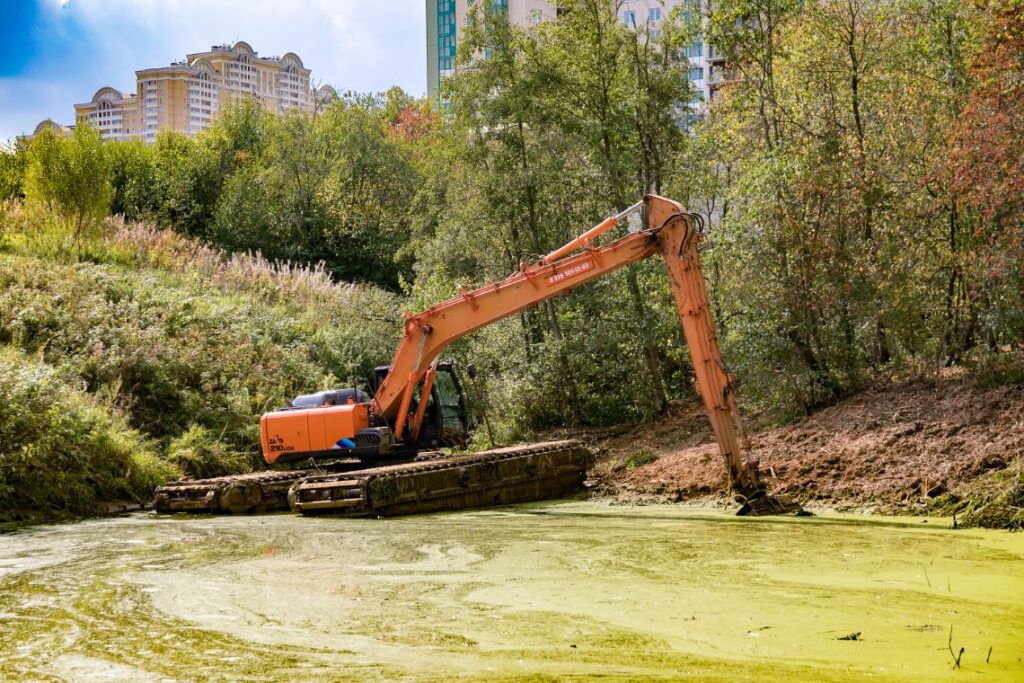
Compliance is not just a regulatory requirement but also a practical safeguard. Municipalities, private landowners, and environmental authorities expect pond dredging services to follow guidelines that protect surrounding communities and ecosystems. Whether it is managing runoff, ensuring proper sediment disposal, or timing dredge services to avoid sensitive breeding seasons, adherence to regulations minimizes legal risks and helps maintain public trust.
The growing complexity of regulatory frameworks underscores the need for modern dredging services to adapt continually, integrating compliance into project design from the earliest stages. This dynamic regulatory environment also shapes how contractors approach mitigation, technology adoption, and long-term sustainability strategies.
Mitigation Strategies in Modern Dredging Services
As regulatory frameworks become more stringent, dredging services are increasingly relying on a combination of engineering solutions, operational practices, and technological upgrades to minimize their environmental impact. These mitigation strategies are not only essential for large-scale dredge services. Still, they are equally critical in smaller projects, such as pond dredging services, where the margin for ecological disturbance is much narrower.
Engineering Solutions
Precision dredging techniques are designed to minimize sediment disturbance and limit turbidity. Tools such as silt curtains, containment booms, and adjustable cutter heads help localize sediment plumes, protecting downstream habitats. For pond dredging services, scaled-down containment systems are often applied to ensure clarity in smaller, enclosed bodies of water where suspended sediments can quickly impact water quality.
Operational Practices
Timing is a key element of environmentally responsible dredge services. By scheduling dredging outside of breeding and spawning seasons, contractors reduce risks to sensitive fish and wildlife populations. Staged dredging, where smaller sections are completed sequentially, also helps ecosystems recover during the project. In municipal or residential pond dredging services, these operational choices are critical in maintaining ecological balance and minimizing disruptions for nearby communities.
Technology Upgrades
Modern dredging services are increasingly adopting equipment designed to minimize environmental impact. Low-emission engines, electric-powered dredges, and real-time monitoring systems enable contractors to track turbidity levels, sediment plumes, and dissolved oxygen in real time. Automation and GPS-based guidance further enhance precision, ensuring only targeted areas are disturbed. For pond dredging services, where environmental sensitivity is amplified, these technologies allow contractors to work with minimal impact and deliver cleaner results.
These strategies collectively illustrate how the industry is evolving beyond basic compliance to embrace proactive environmental responsibility. They also set the stage for examining the innovations that are driving the future of sustainable dredge services and redefining how projects are executed across different scales.
Innovations Driving Environmentally Responsible Dredge Services
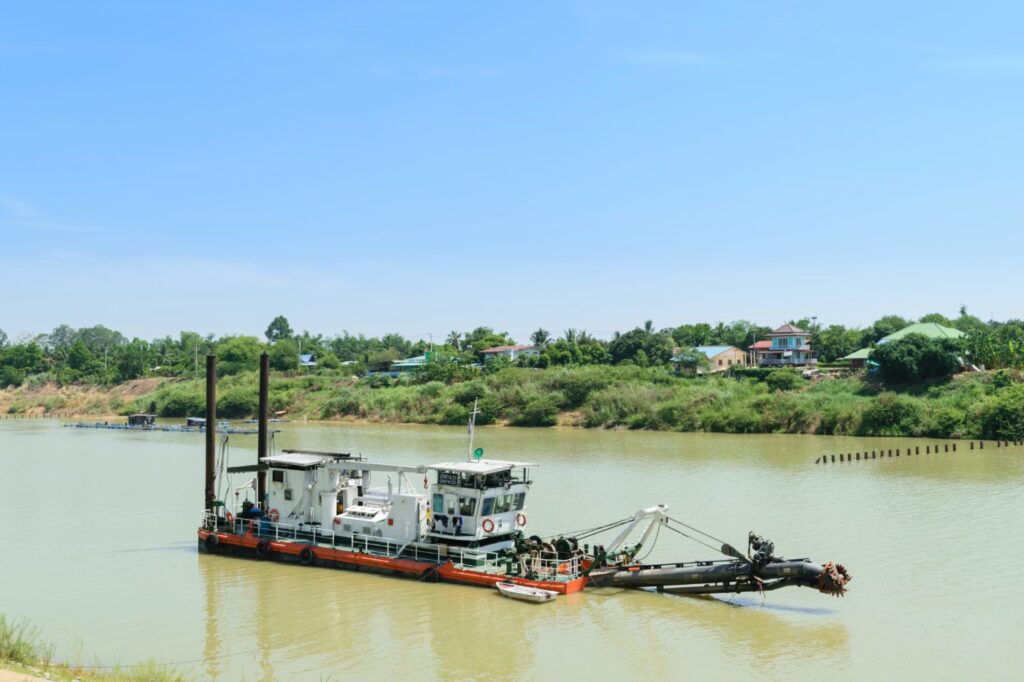
Mitigation strategies form the foundation of sustainable practices, but recent innovations in dredging services are pushing the industry further toward environmental responsibility. Advances in equipment, data-driven monitoring, and material management are transforming the way both large-scale dredge services and localized pond dredging services are conducted.
Remote-Operated and Unmanned Systems
One of the most significant breakthroughs is the adoption of remotely operated and autonomous dredging equipment. These systems allow precise sediment removal without requiring operators to be physically present in sensitive or hazardous environments. For pond dredging services, compact remote-controlled dredges provide safe and efficient sediment removal while minimizing disturbance to surrounding areas.
Sediment Dewatering and Reuse
Instead of disposing of dredged material as waste, modern dredging services are increasingly utilizing dewatering systems that separate solids from water. The recovered sediments can often be repurposed for construction fill, shoreline stabilization, or habitat restoration. This circular approach reduces disposal costs and provides measurable environmental benefits, especially for municipal pond dredging services where sediment management is a recurring need.
Data-Driven Precision
The integration of GIS mapping, RTK GPS, and real-time telemetry enables dredging services to achieve higher precision with less ecological impact. These technologies ensure that only the necessary areas are dredged, minimizing unnecessary sediment disturbance. In small-scale pond dredging services, precision tools help contractors avoid damaging liners, vegetation, or critical habitats in confined water bodies.
Energy-Efficient Equipment
Low-carbon and electric-powered dredge systems are becoming increasingly available. These machines reduce greenhouse gas emissions and fuel consumption while maintaining the pumping power required for sediment removal. For clients seeking pond dredging services in residential or urban areas, the quieter and cleaner operation of electric dredges offers additional community benefits.
These innovations reflect a broader industry shift toward sustainability, where technological adoption is not just about efficiency but also about long-term environmental compatibility. The growing reliance on automation, precision tools, and eco-friendly equipment provides a framework for balancing infrastructure needs with ecological protection, paving the way for more resilient approaches to dredging.
Balancing Development and Ecology
Modern dredging services sit at the intersection of economic development and environmental stewardship. On one hand, dredge services are indispensable for navigation, flood prevention, water storage, and infrastructure development. On the other hand, they directly interact with sensitive ecosystems, requiring careful planning to ensure that progress does not come at the cost of long-term ecological health.
The Need for Dredging
Ports, rivers, reservoirs, and ponds all require periodic dredging to remain functional. Without dredge services, sediment accumulation can reduce water depth, restrict vessel access, and limit stormwater storage capacity. In smaller systems, pond dredging services are crucial for preventing eutrophication, restoring water quality, and preserving recreational or municipal value.
Ecological Considerations
While dredging is essential, it is inherently disruptive. Aquatic habitats, fish populations, and wetlands can all be impacted if projects are not managed carefully. This is where the balance becomes evident: modern dredging services must achieve operational goals while incorporating strategies that minimize turbidity, protect spawning cycles, and prevent contamination.
Differentiating by Scale
Large-scale dredge services often focus on navigation channels and coastal projects, where impacts and mitigation are measured in broader ecological terms. By contrast, pond dredging services demand a more localized approach, as smaller ecosystems are more sensitive to disturbance. In these cases, precision tools, real-time monitoring, and eco-friendly practices are not just best practices but essential requirements.
Balancing development and ecology requires continuous evolution of dredging services, integrating environmental safeguards into every phase of a project. This ongoing tension between human needs and ecological preservation drives the industry toward more innovative, adaptable, and sustainable solutions.
Future Outlook: Sustainable Dredging Services
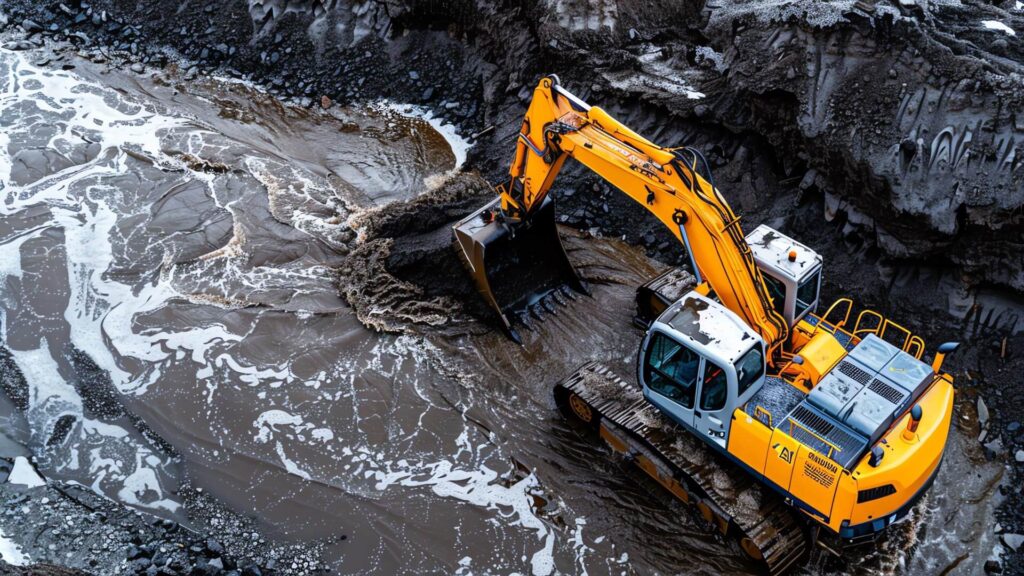
The future of dredging services is being shaped by the growing demand for sustainability, tighter regulations, and the need to balance ecological health with infrastructure development. As environmental expectations rise, the industry is moving beyond compliance toward a model that prioritizes resilience and long-term ecosystem stability.
Shift Toward Low-Carbon Operations
Equipment manufacturers are developing hybrid and fully electric dredges that significantly reduce fuel consumption and emissions. These advancements are already being integrated into both large-scale dredge services and smaller-scale pond dredging services, where quiet, clean equipment is especially valuable in residential or municipal areas.
Continuous Monitoring and Smart Systems
Emerging technologies, such as AI-driven monitoring platforms, automated turbidity sensors, and predictive analytics, are enabling contractors to track and respond to environmental impacts in real-time. This data-driven approach enables dredging services to fine-tune operations during projects, thereby reducing risks before they escalate.
Closed-Loop and Circular Solutions
Instead of treating dredged material as waste, future practices are expected to incorporate closed-loop systems that process, treat, and reuse sediments in construction, agriculture, or ecological restoration. This approach not only reduces disposal challenges but also demonstrates how dredge services can contribute positively to sustainability goals.
Raising Client Expectations
As sustainability becomes a central industry benchmark, clients are increasingly selecting providers of dredging services based on their environmental practices. In particular, pond dredging services for municipalities and private owners will be evaluated on how effectively they protect local ecosystems while achieving improvements in water quality and storage.
The industry’s forward trajectory suggests a shift where environmental responsibility is not just an add-on but a defining characteristic of modern dredge services. How quickly contractors, regulators, and clients embrace these sustainable practices will determine the role dredging plays in supporting both human development and ecological resilience.
Building a Greener Future with Responsible Dredging
Modern dredging services are evolving rapidly, integrating technology, compliance, and sustainability to reduce environmental impact while meeting the demands of development. Whether it’s pond dredging services for communities or large-scale dredge services for industrial waterways, the focus is shifting toward practices that prioritize both efficiency and ecology. At Gulf Coast Dredging, we are committed to delivering solutions that achieve this balance—helping clients protect water resources, restore ecosystems, and build a greener future with us.


